#Nile River near Jinja
Explore tagged Tumblr posts
Text
Uganda: Africa’s Ultimate Safari Destination
Uganda, often known as the "Pearl of Africa," certainly justifies its title. With stunning views of the River Nile and Lake Victoria, diverse cultures, and numerous national parks teeming with primates, wildlife, and birds, Uganda stands out as the ultimate destination for safari holidays. Its landscapes are incredibly varied and picturesque, ranging from mountains to lakes and forests. Safari holidays in Uganda offer a unique and enriching travel experience with diverse attractions that cater to various interests.
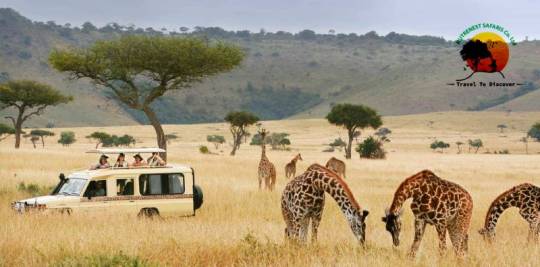
Why Visit Uganda?
Rich Wildlife Uganda is home to a wide range of wildlife and boasts several national parks that provide excellent opportunities for safaris and wildlife viewing. If you're interested in wildlife safaris in Uganda, you might wonder what kind of animals you can see. Uganda is a paradise for wildlife lovers, boasting a diverse range of animal species. From bush elephants to African lions and big cats, Uganda has almost every kind of animal you can imagine.
Among the mammals you can spot are tree-climbing lions in Ishasha, buffalos, elephants, crocodiles, zebras, leopards, elegant antelopes, and hippopotamuses near the picturesque lakes within the parks. Some endangered animals include the Mountain gorilla, Chimpanzee, crested crane, African wild dog, and Pangolin. Uganda is home to around 400 gorillas and various primates like the red-tailed monkey, black and white colobus monkeys, vervets, and olive baboons.
National Parks Uganda's national parks, such as Bwindi Impenetrable National Park, Murchison Falls National Park, Kibale National Park, Queen Elizabeth National Park, Lake Mburo National Park, and the remote Kidepo National Park in the Karamoja region, are brimming with wildlife and stunning landscapes.
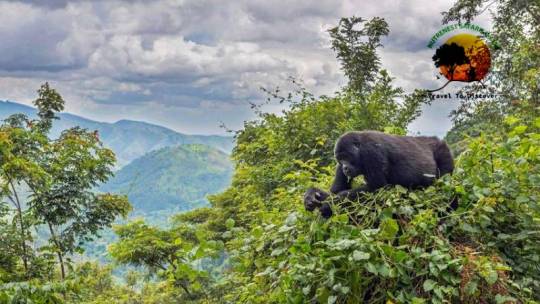
Bird Watching Uganda is a bird watcher's haven, home to thousands of bird species, including the Grey Heron, Black-headed Heron, Goliath Heron, Purple Heron, Great Egret, Black Heron, Intermediate Egret, Grebes, Great Bittern, Dwarf Bittern, White-backed Night-heron, Black-crowned Night-heron, Striated Heron, Cattle Egret, and Madagascar Pond-Heron.
Gorilla Trekking One of Uganda's most famous attractions is the chance to see mountain gorillas in their natural habitat. Gorilla trekking is a popular activity in Uganda, with permits priced at $600. While it may be expensive, spending an hour with these endangered species is an unforgettable experience. By purchasing a permit, you contribute to the conservation of these primates and their rainforest homes.
Adventure Activities For adventure seekers, Uganda offers numerous thrilling activities. The Nile River near Jinja is renowned for some of the best white-water rafting in the world. The country's varied terrain provides excellent opportunities for hiking and trekking, including the challenging hike to the top of Mount Elgon.

Taste Local Fruits Uganda is well-known for its banana cultivation, which keeps the country lush and green. Visitors can enjoy rare fruits such as papaya, sweet jackfruits, pineapples, and more. Experience the natural flavors of Uganda with cuisine crafted from local seasonal produce.
Supporting the Local Community Visiting Uganda supports the local community, as tourism revenue helps build hospitals and schools. For example, Bwindi Hospital specializes in HIV treatments and is one of the projects supported by tourism.
Best Lodges to Stay Uganda offers a range of accommodations, from budget to luxury, built with African materials and showcasing the rich African culture. These lodges, campsites, and hotels provide comfortable rooms, free Wi-Fi, hot water, bars, swimming pools, playgrounds, and gardens. The friendly and hardworking staff ensure a pleasant stay at a favorable price, depending on the visitor's preference, facilities, location, services, food, and amenities.
For booking safari holidays and accommodations, choose Nature Nest Safaris. You won't regret it. As Ugandans, Nature Nest Safaris is dedicated to ensuring your journey and stay are enjoyable. Their happiness comes from seeing you smile. The team at Nature Nest Safaris plans the best Uganda wildlife safari holidays tailored to your desires, covering accommodations and activities that wildlife enthusiasts will love.
#Bwindi Impenetrable National Park#gorilla safari tour#Nile River near Jinja#Safari Tour#tour#Tourism#travel#Uganda Safaris#Uganda wildlife safaris#wildlife safari
1 note
·
View note
Link
2 notes
·
View notes
Text
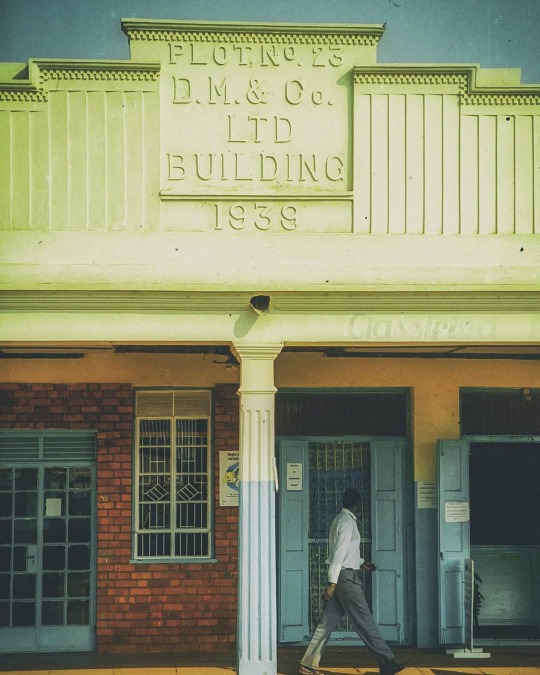


Before 1906, Jinja was a fishing village that benefited from being located on long-distance trade routes. The origin of the name “Jinja” comes from the language of the two peoples (the Baganda and the Basoga) that lived on either side of the River Nile in the area. In both languages “Jinja” means “Rock”. In most of Africa, rivers like the Nile hindered migration, this explains the ethnic boundaries along the Nile as one moves north from the river’s source on the northern shores of Lake Victoria.
However the area around Jinja was one place where the river could be breached due to the large rocks near the Ripon Falls. Here, on either bank of the river, were large flat rocks where small boats could be launched to cross the river. These rock formations were also accredited with providing a natural moderator for the water flow out of Lake Victoria. For the original local inhabitants, the location was a crossing point, for trade, migration and as a fishing post.
This might explain why, despite this barrier, the two tribes have very similar languages, and the more powerful Baganda had an enormous influence on the Basoga. The area was called the ‘Place of Rocks’ or ‘The Place of Flat Rocks’. The word for stones or rocks in the language of the Baganda is ‘Ejjinja (Plural Mayinja), and in the Basoga dialect this became Edinda. The British used this reference to name the town they established – “Jinja”
Explore this amazing town and much more with Tusk safaris😎
#visituganda #travel #travelphotography #outdoor adventure
1 note
·
View note
Photo
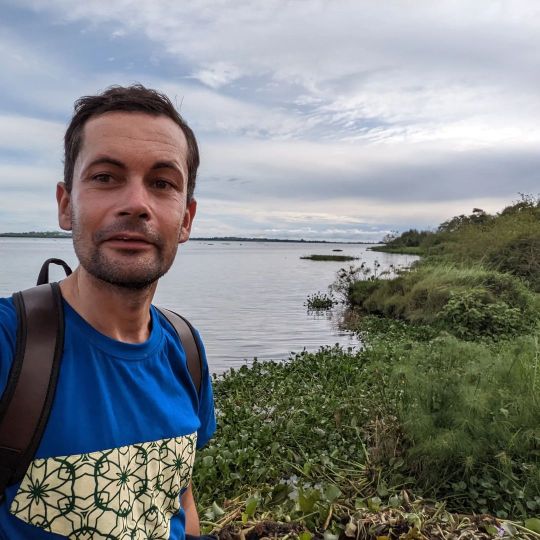
Lake Victoria is drained solely by the Nile River near Jinja, #uganda🇺🇬 ganda, on the lake's northern shore. In the #kenya🇰🇪 sector, the main influent rivers are the Sio, Nzoia, Yala, Nyando, Sondu Miriu, Mogusi, and Migori. (à Lake Victoria) https://www.instagram.com/p/CmAVRTUo7vI/?igshid=NGJjMDIxMWI=
0 notes
Text
Escape to the East
Our travels begun in Luzira, a sleepy town known for satiating Uganda’s sweet tooth with its vast sugar plantations. Here, we came to visit Mabira forest, specifically the Griffin Falls Camp, where there’s a thrill seeking zipline and a meandering nature walk that will, hopefully, help you find yourself. We took the nature walk down to the falls. Unfortunately, after so many years of unregulated dumping of effluents and residue by the sugar factories in the area, the waters have turned brown and there have definitely been untold effects on the surrounding environment. Hopefully, the necessary authorities can step up their regulatory game, so that this beautiful attraction is not lost to the vagaries of human consumption.

Next up was Jinja, the touristy and trade city in Eastern Uganda. It is known as such because of the dual roles that it plays in Uganda. First of all, it’s on the main transit route through which most of the country’s imports come through, from the port city of Mombasa, in Kenya. In addition to that, in the 70s, Jinja was the industrial hub of this East African nation, before one of its most infamous leaders expelled pretty much most of the Indians who had helped this town claim that title. Many of those factories and industrial complexes were not revived, but others have sprung up as a result of Jinja’s aforementioned location on Uganda’s main transit route.
Secondly, and just as importantly, this city happens to lie near the beautiful and scenic Source of the Nile. And this has really built up its tourism resume. There are countless activities from bungee jumping in this famous river, to relaxed or thrill-seeking tubing, catching some of its amazing waves while rafting, and quad biking on its dusty outskirts with some of its younger natives chasing to keep up! We were here clearly to take in this part of Jinja. Our first stop was Busowooko Falls. These beautiful rapids were formed after part of the Nile was dammed to create the Bujagali Falls Dam.

There are number of activities around these falls. You can hire some of the locals to catch some fresh fish for you, or chill by the make-shift bar and enjoy some tunes from the outdoor disco. If you feel the adrenaline coming on, you can take a walk along some of the rickety bridges that criss-cross different points of this breath-takeaway natural attraction. Beware though; there were no life jackets in sight, so if you slip and fall into the falls, well, guess we’ll see you somewhere downstream or… upstream. Having taken all of this in and spent the entire day on the road, we retired to our modest accommodation and looked forward to more discovery the next day..
And WOW…!
It was well worth it. We took a small engine powered boat from Rumors pub (guess the rumors about Jinja being a vibe were true!!) to Samuka Island, which is located about 6 miles from the Source of the Nile. This Island is actually inside a bird sanctuary and therefore has quite a number of different species. There is a hotel on the Island, however, it’s not much to write about, as it has fallen into a bit of disrepair. But the views…!!! Wow, the views are literally to die for. There are 360 degree views of Jinja, Njeru and the surrounding areas. And the boat ride there and back was a blast! A blast of waves and a blast of fun!! We caught a glimpse of the infamous Jinja prisons and the Hotel Triangle, which I’m told, was quite the merry making spot in its heyday. It was a great way to end our tour of what I call the “Jewel of the East.” Jinja, you will forever live in our hearts. Now, onto Mbale�� See you all soon!
0 notes
Text
Resting On The Nile
Usually when the Nile River is discussed, the topic is ancient Egypt. While the Nile is considered the source of life for ancient Egyptians, it is also the source of life for many Sudanese, Kenyans and Ugandans.
The zero point of the Nile river is in Uganda near Jinja. It is the place where lake Victoria ends and the Nile begins. The Nile is over 6000km long and is home to many different species. There are also man made dams and islands in the Nile.
Since I absolutely love water, I found being on the Nile to be such a calming and serene experience. I imagined that my ancestors did too and that I rested where they rested.
I hope you enjoy my pictures from the Nile. Stay Tuned for more of my adventures!
Be Blessed!
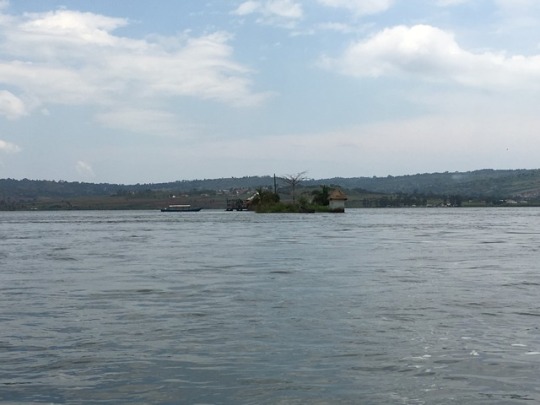



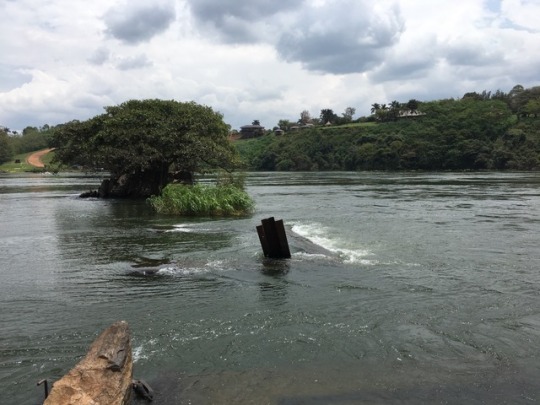
2 notes
·
View notes
Text
MSE Musicalchangemaker20: Documenting Global Sounds That Everyone Can Use - Global Sound Movement with Paresh Palmer & Phil Holmes

A very special welcome to #MusicSecretsExposed PodcastToday, I have two very special guests. Usually, I just have one. And the first guy I have is called Paresh Palmer. And he's deputy head for business development and partnerships. But also more interestingly from us here at the Music Secrets Exposed community, founder of or co-founder of global sound movement known as GSM. And I also have today Phil Holmes, which is titled with this title, take a listen. Director of the research center of cultural preservation to creative practice. And by everything that Phil, you're telling me before we started recording, it is very creative. Welcome. Thank you very much. Indeed. Thanks. Having those with you today. Well, actually, your project, your project is so interesting. And I think for young musicians coming up the line and even more advanced musicians to know about what you're doing what you have enough for adds a new dimension of creativity to their work. Because so many people now make video or, you know, they do some form of audio messing about or whatever, that you're doing a very interesting job. So you both with another guy by the name of Phil. Yes, two Phil's , and a Paresh founded the GlobalSoundMovement. So can you explain what it is and how it was founded? Paresh you want to take this one? Sure. Yeah. So in essence, we're a social enterprise, we preserve instruments of rare and cultural importance, and preserve that digitally, once preserved digitally provides access for anyone else in the musical industry to pick these instruments or, and embed those into their musical compositions. So what can people find on the website just to kind of give a picture a visualization of what they can see. So the website is absolutely a treasure trove of every project that we've ever done really, along the top, once you go to GlobalSoundmovement, you can select any of the different destinations within there, there's usually been a major project that we've gone out to do, whether that would have been recorded a specific instrument or set of instruments. But also the other things that we record whilst we're away, which is environments that are subject to changes due to modernity. So for example, across Africa, there's some wonderful landscapes near the River Nile, in a place called Jinja. Which there's a specific wildlife, the local to the forest, and has been provided with a natural soundtrack for that village for many years. But they're about to flatten it are about to extend the power station across the Nile Global Sound Movement · Band Practice On The Banks Of The River Nile Global Sound Movement · Amy Uganda - by PolyPhonic Clix So we felt it was really important to protect that natural sound to document that natural sound for that village, because that's going to be lost in a few years. All the projects that you'll see as is your glance through our website, we did a project where we've reunited Africa and Europe through music. I'll let you go and have a look at that one. We've recorded Camelot orchestras out in Indonesia, etc. But each one of the microsites, each one of the pages really details, the whole projects that we've done. The recordings that we've made the friends and colleagues that we've made internationally, the partners that we work with the good work that the GSM was managing to find out through the sale of the products. Yeah, I was just going to ask you so it's it's a nonprofit, I think this global sound movement. Am I correct? So the funding really, that you're getting in through this website is for further recording in the field? Am I right with that? Not really..Because, for example, first the first project that we did out in Uganda, we recorded a specific instrument called the Ámidinda and the Amidinda is like a big kind of xylophone. They dig a hole in the ground, they light it with banana trees. They put these big keys that are tuned with an axe on top of this, depending on the composition between kind of six to eight people play again at any one time. Global Sound Movement · Amy Uganda - by PolyPhonic Clix So what we did was, we went and sampled that instrument. And I think we took you the region of 800 individual hits of that specific instrument, where we came back in post-production, we edited those hits. So we've got the transit at the beginning, and the envelope shake decays just at the end. So you do get the natural environment, we constructed this instrument, digitally through contact, Native Instruments contact, able to the SubPolar logics EA Access 24. So people can now purchase that instrument, they can load it into either logic cable to enter or indeed anything else to contact. They're free to play it, record it, include it, but the money that they've purchased that instrument for go straight back to the people in Africa that built the original one. And that's, that's a lovely story and all supporting the local community through your work. That's beautiful. Thank you very much. But that's, that's the same for each of the projects that we do. That's kind of the trajectory that each one goes on. Go ahead, Paresh. Yes. I was gonna say yeah, so wherever there is, is where we don't record instruments. So we've gone into proto where we've hit the Rock of Gibraltar in and stelllemites types and started mining. Global Sound Movement · Pillars United - Re-worked Yeah, I was just listening to that. Yeah, yeah, it's very interesting sound. Yeah, we can't really donate that money that was bought back from there. So the cost of that instrument is a little bit cheaper. But the other thing that we are going to do is we've mapped it across keys on a keyboard. And when you write a message, you can listen to the message in stehlik types. So there's a different way of interacting with the sound that we've recorded as well. So the other thing that we're really keen on is thinking of interesting ways of accessing the sound that we've recorded. So pressing the keys is one way, but we've also upskilled it by making Virtual Reality instruments. So there's a huge drum in China, which you possibly couldn't live to get into your own living room. But what you can do is you can access it via VR, you get to see the scale and the size of the instrument, and you get to hear it in its accuracy in terms of the way it will record it as well. So you get a real feel for the instrument. In a virtual environment. Thank you very much. So what I'd say though, is it seems like that it's a work that is first, it's very valuable, but there seems to be an incredible opportunity for collecting more and more sounds out in our world that are potentially being passed over by modern life. That's true. It depends where you're looking everywhere has got sound, everything needs sound Danny Boyle, the film director said that the cinematic experience if you go to the cinema 90% of your experience within the cinema is the sound. If the sound of the music's off that take it doesn't matter what the CGI, the visual effects are doing that you're not going to have that complete experience. Yeah. You know, I think something that we do, certainly is the global salaries that were coming at this from kind of an artistic Yes, but also a scientific informed practice, field-based practice, is that our field record is that we make it the highest possible quality that we could do. So when we come back, we've got authentic sound, sound environments, from certain specific places that feel that it is one to use. And I think that because we've got this high, or we as consumers, now we're after revealing high definition, both in terms of the visual and the audio, even in our front rooms, where we're looking at our televisions, where we're listening to music, we really want this high, high definition. And because of that, I think you know, what the global salvos would do is provide production houses with high fidelity recordings that could be included both you Phil radio, video compositions. Really In summary, what you're saying is the quality is there to be applied to top-level projects very much. Yeah, if somebody wants to kind of go and take them from you. And when you look at this genre of work or this style of work now you're located in the University of Central Lancashire but are their opportunities for students to come into the university and take up a career path in This type of work where you're collecting sound and the environment, there might be musicians themselves. So they have a great understanding and then apply that knowledge in a studio setting, you know, a production setting and so forth. Like, what sort of opportunities because I know that there's a lot of musicians out there, and they want to stay within the music field, but they might want to go into the field of performance. Because we know what happened, there was a huge fallout with COVID. And very often questions are asked, what is the validity of this musical education? Where can it be used with a sound footing? So is there an opportunity here that people can look into and research and perhaps really get excited about? Because I think this is amazing. . Okay, so another hat that I wear at the university is that I'm a senior lecturer in music production. This kind of this project, it has been aided for the last kind of six years through that, and obviously, our connection with music production at the technology side of things. But in answer to your question, if a student does come to the University of Central Lancashire, there'll be studied at the School of Arts of media within that school, then that's where are the global salary for Project sets. So what we could do is we could access different courses, and we could mobilize academics through transdisciplinary projects. So students that work on the global cell movement, because each one I think it's important to say at this point that each one of the international trips that we've done, we've taken students with us, or that the students have got that field based experience in Africa, Cyprus even easier, Bali, which is ended easier. She bro, Africa, everywhere we've been, and we do take as many students as we can. So they're getting real world experience field based experience, then they're working with the post production back at home. And actually, there's more than one student that is that that's actually now employed. Because one of those Josh's apply by point by Spitfire audio we had raised that got picked up by Imogen Heap, the folk musician and CO collaborated with her on the sole basis that he was a part of the global cell movement, we've had at least three, four or five different people that got on to do the PhDs in this area. it sounds though, the way you're speaking that there is a new form of creativity being developed. Like, for most musicians, who are just trained in the normal system of music, they go through the classical exams, of example, boards around the UK and Ireland, diamond, orange or UK, but we share the same kind of education. And, you know, that's kind of the frame of reference with this, to me is something that isn't very well-spoken about. Because it's very niche based within your university, even though that we listen to incredible sounds in movies, commercials, and so forth. And I'm thinking that, like, how new is the global sound movement? How new is this whole process within university life? I think. I think you've just asked us a couple of questions out, I'll try to answer all of them in Coda sequencing, I think the idea of recording environments, or recording specific places for use in film, television backgrounds, scratch tracks, etc, etc. That's not a new thing. The BBC have been doing that for an incredible amount of time Hollywood's been doing it for 3d monitor, Jack Foley, hit the invention of the talkies and all that type of stuff. It's, that's not a new thing. I think the angle that we're coming at it with is that we're actually going out to the specific places , where capturing the sound of that you can't get more authentic than a global cell movement sub pool Highbury, because rather than bring the instrument to the recording studio in England, where we've got a sterile environment, so we could spend weeks trying to get the perfect, perfect sound, we actually got to record it what's at all in the way that it is, should be heard? That I think that's kind of a new element for us. And I think that, well, we will the Times Higher Education Award for 2016 for excellence in innovation in the arts. They actually recognize the fact or that, you know, the Times Higher recognize the fact that that we were actually standing up getting to play going over to these places having these cultural exchanges of the standard the importance of those instruments, and recorded them is such a way that does the Justice High fidelity. So I think the area of what we do is you but the way in which we do it is you okay to out there. So where is it that in the excellence and innovation of art, I feel so yes, we'll record it and record it a very high quality, but it's the way that we present as well. So if you look at each of the projects, you know, we do exhibitions, we present it in lots of different ways as well. So we've done live fashion shows where we're integrating Western sound with the sound that we've recorded for China, and we do a fusion fashion show where the music and the visual identities all combined, so you get out exactly, you get that full experience. You've got this virtual reality setup that we're working on. You've got the mapping of distillate types on a keyboard. So when you write a message, you're playing instruments, and we're recording brand new instruments, things that we've created, you know, we credit that is Elephone. Phil and we didn't say Chris, so Alyssa phones, music, musical instrument made out of rock . Yeah, imagine Yeah, yeah. We were actually we had an hour to kill in puff fast, to be honest, I'll be will tell you this where we've no secrets. So we had an hour to kill. So we went to Aphrodite is rock at the beach of Aphrodite. So whilst we were there, myself and Phil Bush, pressured the students, students when they're all walking around, and it's a pebbly beach. But the pebbles are quite big. We pick them up, and then I can't remember which one of us it was actually pressured. Global Sound Movement · Santuri Loops I'll probably give you the credit for this. But we dropped one of the pebbles, it actually made a musical note, a sound. So we said that we suddenly said, Right, everybody stopped what you're doing. Let's see if we can get two octaves of pebbles. So we kind of were clique of these pebbles around the beach. We got about two and a bit octaves worth. Yeah. And then we went to, we needed to record them because all of our kit was in the was about half a mile away of the van. So we did actually take these pebbles away. And we went to the tomb of the caves in order to record them, thinking that there was going to be a naively thinking that there was going to be this huge reverb and this used to have the keys and it was we turned off, but it was the most acoustic dead small space. But it was great. It was great. We did manage to record each one of these notes, or there were post production we needed to guide the ever so slightly to the lyricist. No acceptable noses. Satya? Yeah, Alo, we've packaged it together as Sylvia delighted to tell you that we've called it guess what we've called the instrument. Fabulous. The rocker dish feel oh, go away, though. Rockin should be Oh, that's funny. I love the creativity of this. I absolutely adore it. The question I have, though, comes back to documentation. Oh, here in Ireland, we have the ITMA, which is the Irish traditional music archives. And they viewed as incredibly important for understandable reasons that there's a section in Irish music with elderly people now that have skill, uniqueness, instrumentation, so forth, that is being archived and taken care of so future musicians can come into the archives or doing research or whatever, get prepared for a gig or whatever, that they might find something unique and new to give their audience and look at the history and where it came from and so forth. So what I'm wondering is, how important do you think, how important do you think it is? To document sound and to document music? How important is that task? I think if I just take the first bit precious, I'll hand it over to you if that's okay. I think, you know, our view is it's incredibly important to document these things. Because, you know, if we're being completely brutally honest, most of the instruments that we've recorded today will die out within the next 15 to 20 years, I will never be heard again, that scale of playing the skill of making those instruments will be lost. But we think that generations to come have the right to actually understand what those instruments were or what those instruments sound like. And actually, from a creative point of view, how those instruments can actually integrate and form part of your musical work. So I mean, the xylophone we were talking about before was the vendor out in Africa that is now has replaced a kick drum in some Swedish dance music, and they're actually using that instrument rather than a traditional Get the rockfish bill we were just talking about is used the Delta music as well, because it because of the frequency of which it is it actually sits above some of the synth pads that he actually provides a bit of decoration which doesn't interfere with the lead vocals from it from a kind of a frequency to equalization point of view. So all of these kinds of things are kind of driving composition forward whilst looking at the past. But the one of the key things and make no mistake We are the global sound movement. But we there's such a visual element to what we do have what Paresh does is document it visually and present it in a way, which is appropriate for kind of primary school kids, it was past Yeah, so what we are trying to work with is creating an instrument that doesn't require any musical knowledge, I can't play an instrument, but I want to be able to access this. So get onto a website where I can select a Suntory or a rocky spear or a Baszucki. And put those wherever we want and be able to interact with that, learn a little bit about the instrument, know which ones go together, and basically create a composition without the knowledge of knowing what works and what doesn't work. But it can actually create something that sounds half decent. But also, I still use issues could take those libraries and integrate them as well. Because something that we do that we key is disseminated our research findings at different levels of expertise. So from lab musicians up to code of world class composers, what I would say is that documentation from a simple point of view is really important if it's also in video format, because nowadays, because we've audio and video together, that means that these instruments can be remade. So I presume you're documenting is in both forms are you video and audio. Try as much as we can. So we use all the new forms of documentation really. So what you'll find is we use time lapse videos so people can see how we're recording things. There's lots of photography, we've experimented with the Google Glass, so people could see how it was interacting and recording at the time. We've done 360 photography as well. So you can go into YouTube, and you can take a full 360 view of us recording things at the time. So yeah, as the technology changes, we try and embrace that technology to capture as much of the documentation as we possibly can. And obviously, as time passes, new things will appear. And we'll find different ways of capturing that date. Read the full article
0 notes
Photo

The Nile leaves Lake Victoria at Ripon Falls near Jinja. #rafting #kayak #kayaking #boat #swim #swimming #safari #tour #tourist #tourism (at Source of the River Nile, Jinja, Uganda) https://www.instagram.com/p/CTHu_KrKX0G/?utm_medium=tumblr
0 notes
Text
The Ultimate Guide to Kampala

The Ultimate Guide to Kampala - Things to See & Do, Where to Stay & How to Get around
Situated within the Central part of Uganda, Kampala is the country’s capital. This city welcomes many people from different parts of the country who come in for business, shopping and other leisurely holidays. Kampala is the epicenter of Uganda. Several roads start from this city to numerous regions of the country. Some of these routes include Kampala – Jinja – Mbale, Kampala – Masindi – Gulu highway, Kampala – Masaka – Mbarara, Kampala – Mubende – Fort portal highway to name but a few. On your first visit Kampala you are usually welcomed by the freestanding skyscrapers with their exquisite grandeur, busy downtown areas with thousands of locals carrying out different activities, taxi parks, amazing streets and many billboards that display various relevant information to the public.
How to get to & around Kampala
If you are getting to Kampala from Entebbe or other regions of the country, don’t hesitate to contact Uganda Airport Taxi. There are into this field mainly to provide incredible transport services to whoever who would wish to move from one place to another. There are majorly based in Entebbe and doing more of airport transfers. There are also more determined to ensure complacent transfer services for anyone in need at unbeatable prices. Once you get to Kampala, there are plenty of things to see and admire, including historical sites, local markets and religious sites. The list is endless, but what limits most visitors is the way to get there. With certainty, you can get around Kampala by many options including use of a Boda Boda. For a comfortable option, choose to hire a car with a driver to take you around the city’s main points of interest.
Where to stay in Kampala.
When it comes to accommodation, Kampala is no place to doubt. This place is home to the most luxurious hotels in Uganda. Some of these hotels are Serena, Sheraton, Pearl of Africa hotel and more. Besides that, this city is dotted by several accommodation facilities of other categories like mid-range and budget hotels, lodges and guest houses. All these properties offer remarkable lodging facilities that leave most guests just contented of the service.
Where to eat in Kampala.
Kampala consists of restaurants, cafes and fast food outlets. All these facilities serve both local and international dishes that are worth to taste before you leave. Additionally, most hotels and other lodging facilities have onsite restaurants that serve delicious cuisine and fresh drinks at affordable prices. Fas food outlets include KFC, Chicken tonight, Food hub and more.
Where to find Banks & Forex Outlets.
Banks and Forex Outlets are one of the things that are essential especially for foreign visitors. Kampala has plenty of these properties. Some of the popular banks in Uganda are Equity bank, Stanbic bank, DFCU bank, Centenary bank, Eco bank, Absa bank to mention but a few. Most of these are found along the streets in the city like Kampala road in uptown and other corridors in downtown.
Best places for shopping in Kampala.
For those who love shopping, the best places to go for this in Kampala are shopping malls, plazas and supermarkets. Some of the malls are acacia mall, garden city, stores along Kampala road, Freedom city in Namasuba. Supermarkets include Mega, Tuskys, Shoprite and more. For shoes, you can check out Bata stores and numerous shops along Kampala road.
Best places for leisure time in Kampala.
Kampala with its serene atmosphere is a great place to relax while in Uganda. It consists of several venues that offer unmatched treats to those who are after relaxing outings. Some of these venues include centenary park, Kyadondo rugby grounds, malls like kingdom Kampala, acacia mall, garden city, freedom city to name but a few.
What to do & see in Kampala
The list of beguiling things to do in Kampala is endless, but below is some of those you shouldn’t miss for everlasting memories. Visit historical sites. This is for history lovers. Kampala is dotted by many historical sites that exhibit plenty of exciting things including artefacts. Some of these are Kasubi tombs, Uganda museum, the royal palace of Buganda kingdom and the Uganda martyrs shrines in Namugongo. If history doesn’t appeal, Kampala also consists of places that are perfect for fans of religion. The list of these sites includes Namugongo and Rubaga cathedral, Bahai temple and Gadhafi mosque. Try the local food. Uganda’s local food is ranked as one of the most delicious in East Africa. Therefore, don’t miss to taste some while in Kampala. This local food includes Katogo, Matooke, Karoo, Posho, Rolex and more. It is served in most eateries around Kampala at affordable prices. Other prominent places to go for Uganda’s luscious cuisine are the local markets. Meet with locals. Uganda’s local people are welcoming and friendly. Don’t miss to engage with them for some conservation and as well learn how to speak some local languages like Luganda. Local markets like Owino, Nakasero, and USAFI are the best places to have an incredible local life experience. Attend fun events. If you love fun, make sure to attend one of the fun events hosted in Kampala over the weekends. Some of these events are Roast and Rhymes, Blankets and Wine, Meat & grill at Kyadondo rugby grounds to name but a few. Enjoy its vibrant Nightlife. When it comes to partying, Kampala is an idyllic place to do it. This city consists of a plethora of night clubs and bars that awesome and life energizing at night. These spots are scattered around the city and close to different hotels. Try street walks. Another thing not to miss is the street walk. Arrange for this in the morning or evening when all streets are free from sunshine. It is perfect for health and as well offer endless views of standing buildings with their striking splendor.
Top Day tours from Kampala
Visit Ziwa Rhino Sanctuary. Situated just in Central Uganda, Nakasongola district, Ziwa Rhino Sanctuary is home to the species of White Rhinoceros. It was mainly established to reintroduce this member of the African big fives back to Uganda. This protected area treats wildlife addicts with endless views of these animals in their habitats. Rhino tracking is the main activity here and lasts for about one hour for USD 50 per person. Visit Jinja town. If it listing Uganda’s notable towns, Jinja can’t miss. It is soon turning into a city. This area in eastern Uganda has a lot of attractions including the source of the River Nile, so it is easy to understand why it is common on most travelers’ wish list. Some of the activities that keep tourists occupied and excited on this land of the Kyabazinga are white water rafting, boat cruise, quad biking and the visit to the source of the Nile. Zip-lining & Forest walks in Mabira. For adventure travelers, don’t leave Uganda without trying Zip lining and forest walks in one of the country’s biggest forests. This is a popular day tour from Kampala and both activities are possible in a single day. Adding to the calm atmosphere in the forest, tourists on this tour usually enjoy the endless scenic views of different Wildlife species and picture-perfect landscapes. Visit Ngamba Island Chimp Sanctuary. Are you after primates? Ngamba Island Chimp Sanctuary is for you. This protected area is nestled on an island that is part of Koome group of islands. It was put in place to provide beautiful homes for the rescued orphaned and uncared chimpanzees. The sanctuary is now home to over forty-nine chimps. Visitors to this spot engage in multiple activities including chimpanzee feeding, care-giving and more. Visit Lake Mburo National Park. Other than Ngamba, Lake Mburo National Park is another remarkable place to visit from Kampala. It is located in western Uganda near Mbarara town and plays host to a range of wildlife species. These include wild animals like elephants, buffaloes, zebras, antelopes, unique bird species, insects and reptiles. The drive from Kampala to the Park takes about 4-5 hours. While in the park, you can easily take in its scenery either by boat cruise or game drive. Read the full article
0 notes
Text
Part Six 10th Anniversary – A Brief History of Uganda Since European Contact
In Part Five we talked about the need for Child Sponsorship. As a third world country, Uganda has gone through a tumultuous time over the last one hundred years, leaving most of the citizens living in poverty. Following is a brief history followed by some statistics to help understand some of the challenges the people there have faced over time. All of our experiences in travelling the countryside have helped us gain a better understanding of life in a culture very different from Canada. We have more to learn!
Uganda is landlocked, on the equator and surrounded by the great lakes of central Africa. This was one of the last parts of the continent to be reached by outsiders.
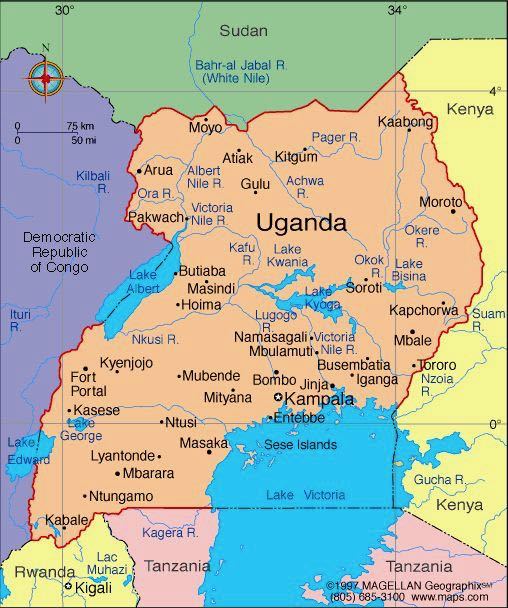
In this issue we’ll show you a sampling of the beautiful countryside we have experienced in our travels while learning some history.
Arab traders in search of slaves and ivory arrived in the 1840s, soon followed by British explorers in the 1870’s.

This was the place carved out of rock that the Arabs would bring Africans to trade. They built this Fort near Gulu in the North to keep slaves: sorting the beautiful ones, who would live and be transported to Sudan and Egypt, from the ugly ones who would be put to death. Sir Samuel Baker wanted to stop this to save the people, and easily defeated the Arabs.
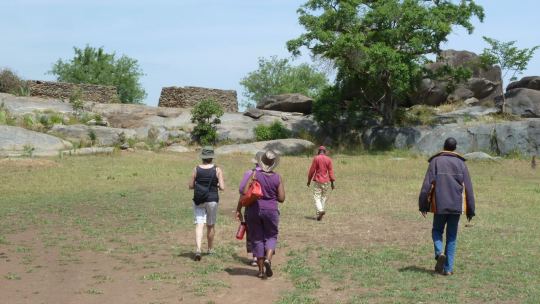
Entering Fort Patiko
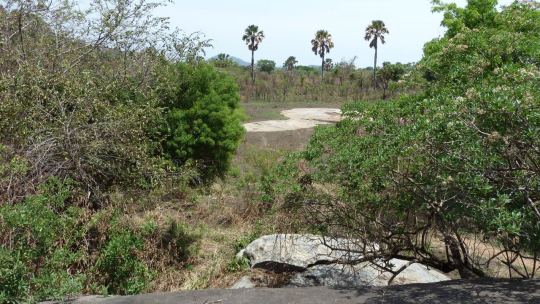
At the north side of the Fort you can see the pathway where they led the slaves to Sudan and Egypt. There were so many slaves being transported along this path that today it is lined with Palm trees that grew from the seeds.
The ruler visited by the British was Mutesa, the king (or kabaka) of Buganda. His kingdom was one of four in this region that had become firmly established by the mid-nineteenth century. The others, lying to the west, were Ankole, Toro and Bunyoro.

Buganda Kingdom Palace 2010
The existence of these African kingdoms had a profound influence on the development of Uganda during the colonial period. In 1894 the British government declared a Protectorate over Buganda. A Protectorate is a State (Buganda) protected and partly controlled by another (the British) as opposed to a Colony which is governed (essentially owned) by another country. Two years later British control was extended to cover the western kingdoms of Ankole, Toro, and Bunyoro to form, together with Buganda, the Uganda Protectorate.
The evident power of the local African kings convinced Harry Johnston, the seasoned British appointed Special Commissioner to Uganda, that control must be exercised through them. Buganda was by far the most significant of the kingdoms. The Johnston policy became effective with the Buganda Agreement of 1900. Under the terms of this agreement the kabaka's status was recognized by Britain, as was the authority of his council of chiefs. The chiefs' collective approval of the British protectorate over the region was eased by Johnston's acknowledgement of their freehold right to their lands (a concept alien to African tribal traditions, but nevertheless extremely welcome to the chiefs themselves).

Lake Victoria is one of the African great Lakes named after Queen Victoria. It is Africa’s largest lake, the world’s largest tropical lake, and the world’s second largest fresh water lake by surface area after Lake Superior. This is a view from the Entebbe nature reserve for rescued wildlife.

Leanne feeding a giraffe at the Nature Reserve in Entebbe
Johnston subsequently made similar agreements with the rulers of Toro (in 1900) and of Ankole (in 1901). With this much achieved and a clear pattern set for the Uganda Protectorate, Johnston returned to Britain.
Later Commissioners (British) developed Johnston's solution for Uganda into a clear-cut distinction between it and neighbouring Kenya. In Uganda the Commissioners declared that Uganda was not suitable for European settlement.

Hiking in Sipi Falls in the area of Kapchorwa on Mount Elgon.
Many disagreed, and pressure built to allow the establishment of European farms and plantations - until another Commissioner, still in the years before World War I, convinced Britain that Uganda was to be an African state as opposed to a colony. The economics of the protectorate supported this policy. Uganda grew prosperous as cotton, introduced by the British, was grown with great success by African peasant farmers.
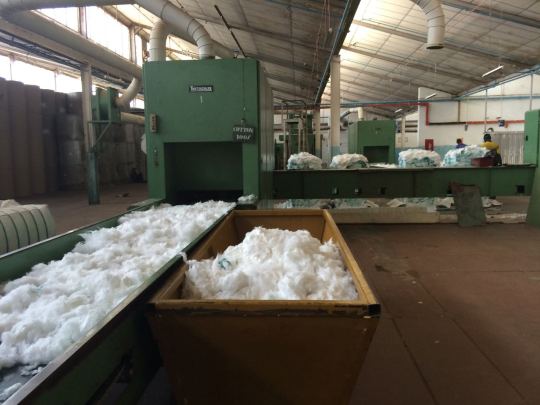
In 2016 we visited a cotton textile factory in Jinja.
But a federal system of semi-independent monarchies proved less appropriate in the years after World War II, when all African colonies were moving towards independence. By the early 1960s the leading Ugandan politician was Milton Obote, founder of the UPC (Uganda People's Congress). Its main political platform was opposition to the extent of British control over the southern kingdom of Buganda.
Britain granted Uganda full internal self-government in March 1962 with Obote elected prime minister. He negotiated the terms of the constitution under which Uganda became independent in October 1962.
Obote accepted a constitution which gave federal status and a degree of autonomy to four traditional kingdoms, of which Buganda is by far the most powerful. In the same spirit Obote approved the election in 1963 of the kabaka, Mutesa II, to the largely ceremonial role of president and head of state.
By 1966 the deteriorating relationship between Obote and Mutesa came to an abrupt end. Mutesa fled to exile in Britain. Obote immediately abolished the hereditary kingdoms ending the nation's federal structure. With the help of army and police he terrorized any remaining political opponents.
In 1971, when Obote was abroad, his regime was toppled in a coup led by Idi Amin. Obote settled just over the border from Uganda in neighbouring Tanzania, where he maintained a small army of Ugandan exiles under the command of Tito Okello.
Idi Amin subjected Uganda to a regime of arbitrary terror. The country's economy was severely damaged when he suddenly expelled all Uganda's Asians in1972, a mainstay of the nation's trading middle class. Between 300,000 and 500,000 Ugandans are reported to be murdered during Amin's seven years in power.
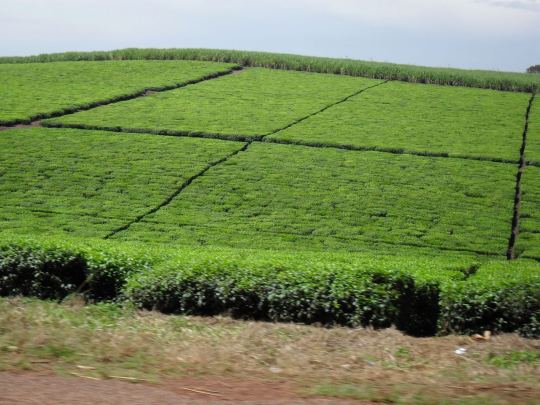
Tea fields – tea is a major export.
In 1978 Amin invaded Tanzania. Julius Nyerere, the Tanzanian president, took the opportunity to repel Amin's army and to topple his neighbour. Tanzanian troops, joining forces with Obote's private army, reached Kampala in April 1979. Amin fled and lived as an exile in Saudi Arabia.
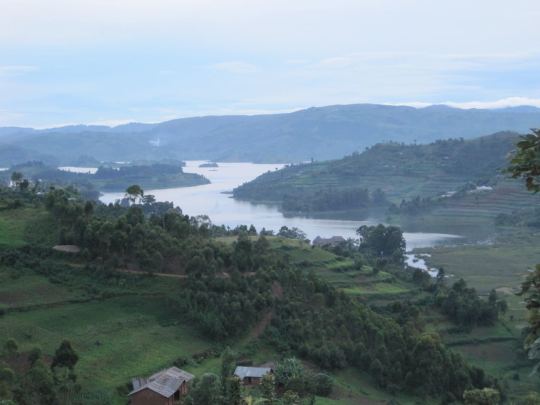
Lake Bunyonyi in Rukungiri in the South West
During the following twelve months there were two interim governments led by returning Ugandan exiles. In May 1980 a Ugandan general, Tito Okello, organized a coup which brought Obote back into power. Obote was confirmed as president in a general election six months later. Uganda had lurched back from a mad dictatorship to a repressive regime held in check only by anarchy.
During the 1980s Obote used violent means to reimpose his rule, while the country continued to suffer both economically and from tribal massacres costing some 100,000 lives. In 1985 Tito Okello intervened once more, driving Obote back into exile. At the same time Yoweri Museveni had assembled a well organized guerrilla army.
Yoweri Museveni had briefly been Uganda's minister of defence for the interim government after the fall of Amin. When Obote returned to power as president in 1980, and his party (the UPC) won a majority in elections widely regarded as fraudulent, Museveni refused to accept this turning back of the clock. He withdrew into the bush and formed a guerrilla group, known as the National Resistance Army (NRA).

Museveni’s war with Obote was fought largely in the area of Masulita where the Children of Jolly Education Centre is where we spend most of our time. Photo taken in 2010.

Masulita Trading Centre
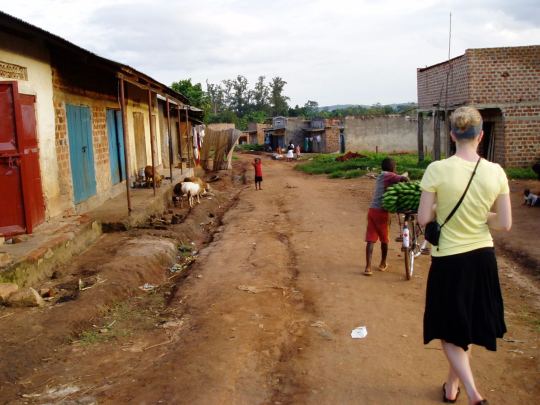
Jill exploring Masulita 2010
During the 1980s the NRA steadily extended the area of southern and western Uganda under its control. And Okello, after toppling Obote in 1985, proved no match for Museveni.
By January 1986 the NRA were in control of the capital, Kampala. Museveni proclaimed a government of national unity, with himself as president, a turning point in Uganda's history.

Kampala is the capital city of Uganda and was built on seven hills. The population has grown to more than 3,000,000 and has spread beyond the seven hills.
A decade later the country was back under the rule of law (apart from some northern regions (Gulu area), where rebellion led by Joseph Kony, Leader of the Lord’s Resistance Army, rumbled on). The economy was making vast strides (an annual growth rate of 5% in the early 1990s and of more than 8% in 1996). There were improvements in education, health and transport. International approval brings a willingness to invest and to lend. The nation, emerging from two decades of appalling chaos, was suddenly almost a model for Africa.
Thirty years later Museveni remains as President having been reelected in every general election since 1985. The country is currently relatively stable and maintains a positive economic growth.
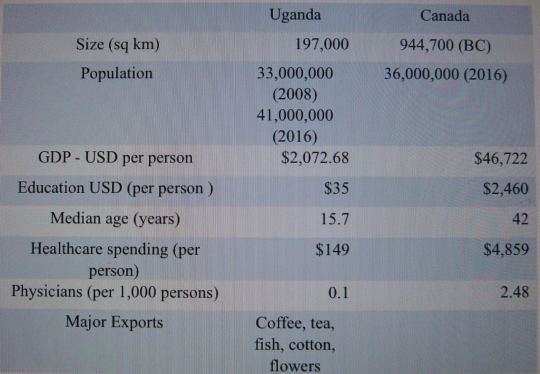
Some interesting comparisons between Uganda and Canada

The village where Jolly was born in Rukingiri is stunningly beautiful
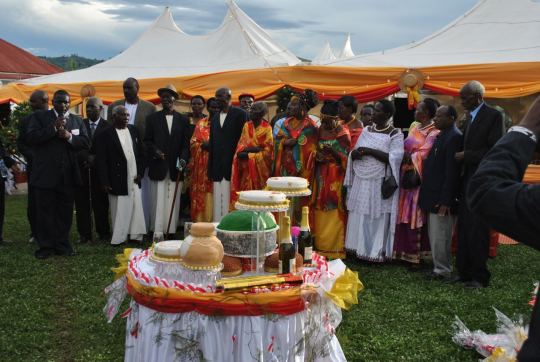
Traditional Wedding

This photo taken in 2010 of the Bujagali Falls on the Nile before the dam was built. Jinja is where the Nile starts its long journey to the Mediterranean Sea through Central and Northern Uganda, Sudan and Egypt.

Overlooking fisherman on the Nile River in Jinja
THE BEAUTY OF GOD’S CREATION: Murchison Falls National Park and Queen Elizabeth Park

Murchison Falls Park in North West Uganda

Giraffes eating the trees
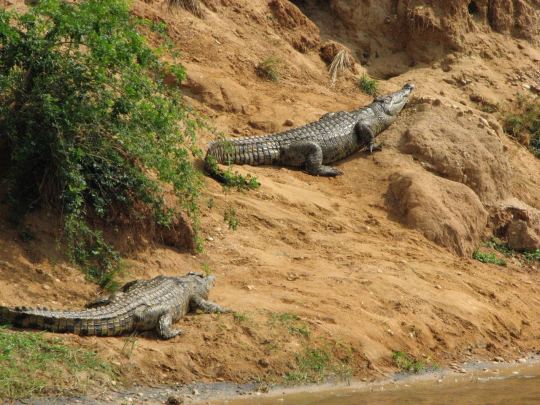
The Nile Crocodile

Medium sized antelope called Springbok

A boat trip on the Nile River takes you to Murchison Falls. This waterfall is between Lake Kyoga and Lake Albert on the White Nile River. At the top of Murchison Falls, the Nile forces its way through a gap in the rocks only 23 feet wide and tumbles 141 feet before flowing westward into Lake Albert.

Murchison Falls from the top. (This Photo taken from Wikipedia)
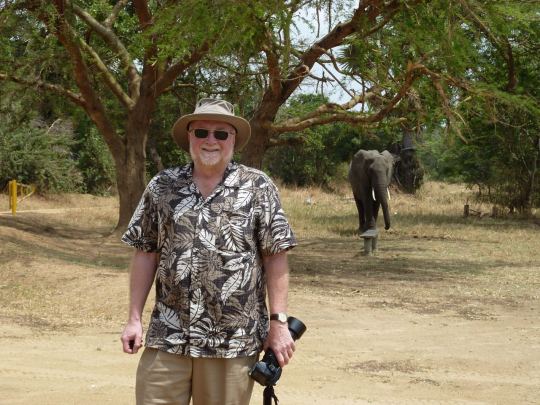
Waiting for a ride at the Nile in 2010 – run Geoff!

Elephants make their slow descent to the water

Hippos and water buffalo live together


THE END!
Watch for our post next week with a message from Dr. Jolly Nyeko, founder of Action For Children
2 notes
·
View notes
Photo
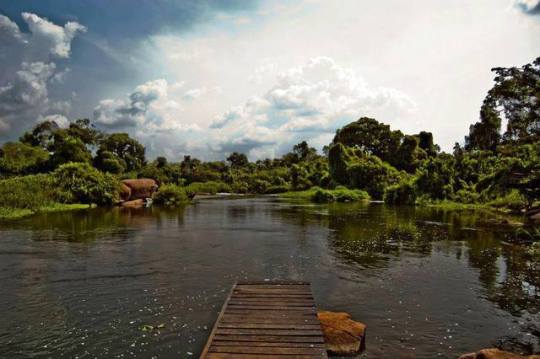
Africa- countries, people, cultures. · May 20, 2013 · Nile River, near Jinja. Uganda. Jinja is the second largest town of Uganda with population of 90.000. The town is located on the shores of Lake Victoria, near to the source of the Nile River. It was established in 1906. Before that year Jinja was a fishing village. The origin of the name "Jinja" comes from the language of the Baganda and the Basoga that lived on either side of the River Nile in the area. In both languages "Jinja" means "Rock".
0 notes
Photo
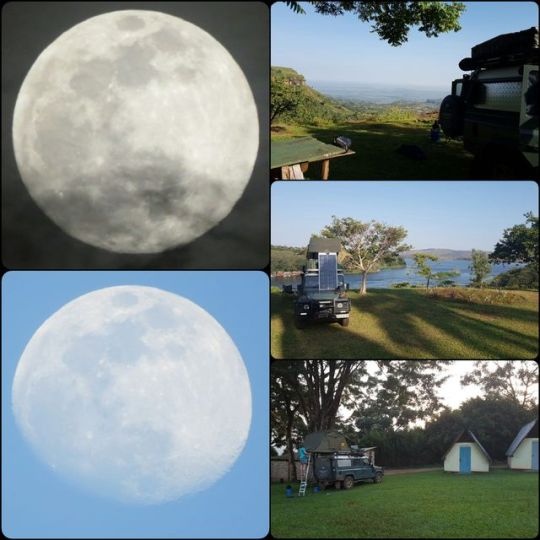
14/8/2017 Post 1 of 12: Twas but a ‘hop, skip and jump’ back south and to the border… (again, sarcasm – it was torture on 4 wheels), but at least a relatively pleasant border crossing into Uganda. Only two glitches were the network being down (so we had to wait several hours to make payment for our TIP) and the brokers only sell 12 months 3rd party insurance at a time – a rather expensive option. The irony is not missed on me that everyone is fully aware you can only get an import permit for your car for 30 days, but they sell 365 days of insurance. Money making scam, methinks….. Since we’ve been in Uganda, we’ve stayed in 7 different camp sites – but we’re still totally flummoxed at how the pricing works? We stayed our first night in the car park of a hotel (near the border) with cold, grotty showers and noisy trucks hurtling past all night – this cost us 25 000UGX. Next night we stayed in a campsite in Sipi Falls, with the most incredible view over the valley and waterfall, warm showers and peace – for 10 000UGX. We’ve been having similar experiences ever since – the more we pay, the less we get?! Very strange! Our route so far has included a few days at Sipi Falls (top), Jinja – the supposed Source of the Nile River (middle), Kampala (bottom), Busingiro forest (wanted to charge us 35 000UGX but we flatly refused and camped anyway – lovely setting but zero facilities and no water), Murchison Falls and we’re now settled in at Fort Portal. Kampala was a crazy hectic few days with nightmare traffic, thousands of suicidal Boda Boda driver’s (bike taxis) and loads of expats shopping at familiar franchises like Shoprite, Game and KFC. Our campsite was spotless and had steaming hot water and electricity – naturally they charged us only 7 000UGX….. There is no relevance to including the moon photos…. I just think they’re pretty :-)
4 notes
·
View notes
Text
Day 25
Weds 29th Jan
Woke up in the internal room with windows into the communal area and Phil was all fresh and keen to get moving. CLASSIC PHIL.
After showers, breakfast arrived with a spanish omelette, toast and curiously two sticks of carrot on the plate. Maybe they’d run out of avocado or maybe they like carrot an egg together.
A girl from the hostel called Kessia started asking us about our plans for the day and we ended up chatting to her and a Germany guy called Patrick for about an hour, getting SO many tips about Kenya & Tanzania. Kessia also told us how to get to Jinja that day and where she recommended we stay, even letting us use her phone to reserve a room.
Such a useful conversation, resulting in an actual plan for the day plus tons of other great nuggets of info. She even gave us her WhatsApp number in case we had more questions - RESULT.
Also - we mentioned the annoying taxi guy we’d got to know in Kabale and how he was everywhere we went trying to rip us off. And German Patrick said he had a similar situation. Then he asked us the guys name, which of course I couldn’t remember, so we showed him the sneaky picture I’d taken and IT WAS THE SAME GUY. There was no escape from this dude.
We got an Uber to the New Taxi Park she told us to get the bus from and it was not quite as easy as we’d hoped. The place was RAMMED with vehicles and people and the ground was muddy and wet. We squeezed our way in between vehicles and people constantly asked us Where we were going. When we said Jinja, some people would just look away (as it wasn’t where they were going) and others would point in the direction they thought the bus was.
It was mayhem to be honest.
And the only buses we could see were the small basic ones, not a nicer one called a Coaster, as Kessia had described. One guy we spoke to told us these were the only buses to Jinja, they were 15000 per person and that there were no Coaster buses. So we said ‘Well, our friend told us there were Coaster buses available and they are 7000 per person’.
He looked annoyed and said ‘You are lying yourself, there is no Coaster bus for 7000’.
I’m fairly certain he was a few seconds away from saying ‘I swear on the Lord above’, so we walked away from him and followed another guys directions to the Old Taxi Park where he thought the Coaster buses were based.
It was an effort traipsing around the chaotic bus park, squeezing in between buses while they tried to drive around, people overtaking us while we carried our bags front and back, being told to ‘be careful’ by one lady, then we found the exact bus to Jinja that we needed, the larger Coaster bus for 7000ush per person. And there was one double seat left woop woop, so neither of us had to sit on the fold down seat. We paid an extra pound each for our luggage and the bus left, spending about 20 minutes just trying to leave the taxi park.
I tried to film out the window to capture the chaos but someone said ‘Put your phone away, they will take it’ so Phil requested I stop hanging his phone out the window.
As we were on a bus, obviously Phil fell asleep fairly quickly. After about 45 minutes he woke up full of hope and said ‘Hey, what city are we in?’.
I looked as his hopeful little (its not little) face and said
‘Uh, we are still in Kampala bruv’
The pain and sadness on his face was brutal.
Bless him he was under the illusion that we were nearly there, arriving at Jinja any minute.
So to dampen his pain, we watched the Crown and zoned out.
Phil had a lady squashed next to him on the fold down seat and everytime someone got on or off she would shove her large bum in his face. The bus stopped at one point and a street seller opened my window and thrusted in about 25 large sticks of cooked chicken thighs on them while another managed to get her hand in with a basket full of cooked bananas wrapped in newspaper. It was like GoGo Gadget Arms and the food fell past our faces and into the centre of the bus as they tried to sell their goods to the locals.
As the journey dragged on, hunger began to kick in and Phil reminded me of the curry doggy bag we had from the night before. He was getting more and more annoyed by the length of the journey so I took it upon myself to organise the curry. I was like a scientist in a lab with my hands inside the bag on my lap, trying to decant the rice into the aloo Gobi dish without throwing it all over the vehicle and ourselves. Phil was getting really annoyed, I think the lady next to him was starting to get to him and then I tried to feed Phil a mouthful to help his hunger. But it was like his wedding day had arrived and he was covered in rice like it was confetti and he was fumin. He was like ‘I don’t want any food, forget it’.
WHAT AN ABSOLUTE RESULT.
So I tucked right in and it was bloody delicious.
I’m not pure evil though, I obviously left him 3 grains of rice to enjoy.
After getting the bus at 1pm we arrived in Jinja at 5pm, just the double of what we were expecting then.
Two bodas quickly appeared and we half-heartedly asked if they had helmets, knowing full well the wouldn’t. As a compromise, we said Ok please drive slowly.
Boy did they take this seriously.
We were overtaken by old ladies on bicycles we were that slow.
After a painful 20 minutes, we arrived at the top of our hotel road and we asked how much - knowing full well that 5000ush was what Kessia had paid for the journey.
It’s always funny when we have two drivers, as they look at each other with a side eye to try and work out how much to say (ie. how much to exaggerate the price by).
My driver looked at us and said ‘Ok, 20000 each’.
It’s so disappointing when they lie in your face!
We told them we knew it was 5000 each so he said
‘Ok, 15000 each then’
We settled on 10000 each just to end the conversation and walked down to Nile River Camp.
The Safari tent we’d reserved was like glamping, with proper beds and furniture and a little light bulb, and there was a big restaurant area with a beautiful view of the Nile.
Phil went for a run immediately to work off the 3 grains of rice from the bus snack while I chilled with the incredible view.
We massively over ordered food - nachos, vege burger and the intriguing ‘3 homemade loaves oven warmed with hummus, olive oil, balsamic vinegar & tomato onion salsa’.
But overall, it was proper average food and we absolutely could not finish it.
Two people sat on the seats near us, so we immediately offered our leftovers to them despite the nachos looking like a major car crash, as this is acceptable and normal here. People are happy to accept food from others whatever the condition of it! They happily tucked in and it was a relief to see that the food would not go to waste.
We ended up hanging out with Winfred and Jimi the rest of the evening. Both from Jinja, Winfred was a social worker and Jimi was a footballer. He told us about his potential move to the UK as Swindon Town had scouted him, so look out for Jimi Ola coming to a footie game near you.
Phil & Jimi talked about Phil’s running etc and they drunkenly agreed to do a run the next morning, joking that Jimi would be like a bullet and Phil would be like a tomato.
I left Phil to his beers and air guitar while he was trying to explain to them who Oasis were and he joined me an hour or so later.
0 notes
Text
Marine tourism in Uganda
Uganda is an East African country with a variety of water bodies ranging from Lakes, rivers, swamps, waterfalls and hot springs in Semuliki National Park. Uganda is gifted with many lakes namely Lake Victoria being the second largest inland freshwater body in the world, Lake Albert being the 7th largest lake in Africa, Lake Kyoga, Lake Edward, and George connected by Kazinga channel and many others all with unique experiences to offer, rivers like River Nile a North-flowing river and the longest in Africa, River Kagera, and River Kafu among other, swamps like Mabamba hosting the rare shoebill with other bird species. These water bodies host wildlife like terrestrial wild animals, birds, aquatic animals, and a variety of butterflies.
There are three national parks in Uganda with boat cruise as a tourism product in Uganda and these are Lake Mburo National Park, Murchison Falls National Park, and Queen Elizabeth national park. The majority of Uganda’s marine adventure tourism activities are done in Jinja also known as the adrenaline capital of East Africa.
Marine activities in Uganda
Boat cruise
The boat cruise is the most interesting and enjoyable activity Murchison Falls national park offers. The boat cruise can either be to the bottom of the Murchison Falls or to the Albert delta.
To the bottom of the falls
This is the most enjoyable activity in Murchison falls national park because the launch starts from Paara dock and sails upwards towards the most powerful waterfalls in the world (Murchison Falls) as you set your eyes on schools of hippos, a variety of water birds, terrestrial wild animals at river banks like elephants, oribis, warthogs, buffalos are usually seen taking water and cooling their body temperatures. Crocodiles are also seen especially in spots near the waterfalls basking. The boat cruise to the falls gives our clients opportunities to take photos at a close range and good viewing of the wild game since the boat cruises closer to the animals.
The Albert delta launch cruise
The launch cruise to the Albert delta also starts from Paara dock sails smoothly on the flowing waters of the river Nile. The river splits up creating numerous Islands of papyrus zones. This delta also inhabits the rare shoebill, grey-headed kingfisher, Egyptian goose, white-crowned wheatear, African skimmer, Abyssinian ground hornbill palm nut vulture among others.
The boat cruise to the bottom of the falls is done in the morning and afternoon daily. The morning boat cruise starts at 9 am and the afternoon boat cruise starts at 2 pm both lasting for 2 to 3 hours depending on the speed of the boat.
Boat cruise at Kazinga channel
This channel connects Lake Edward and Lake George and it’s a 32km long channel connecting the two lakes. This channel has a variety of birds, aquatic animals and also attracts a variety of terrestrial wild animals that are observed in a close range during the boat cruise. Wild animals to look out during the boat cruise include hippos, Nile crocodiles, buffaloes, elephants and a variety of bird species like saddle stork, black crake, shoebill stork, yellow barked stork, and many others. The boat cruise gives you a chance to take photos and also view animals in a close range. The boat cruise sets off at 9 am and 2 pm in the afternoon daily at Kazinga channel.
Most of the marine adventure tourism activities are done in Jinja and some of them are bungee jumping, white water rafting, sunset boat cruise on the Nile, visiting source of the Nile, horseback riding on the Nile, jet boating on River Nile, sailing to Jinja from Entebbe on the M.V.Vanessa, all-terrain quad bike safari along the Nile and many others
Below are some of the top marine adventure activities you can do in Uganda
Bungee jumping
This activity is not for the faint of heart because it’s thrilling therefore it needs psychological preparation before you go for it. It involves jumping from a platform with a bungee cord connected to your two tied legs. Diving from a tour and touching the river Nile makes this activity unique and unforgettable because you touch the longest river in the world
White water rafting
White water rafting involves cruising from mild water to wild white waters of the river Nile. This activity is thrilling but you won’t forget that experience of rafting on the longest river in the world (River Nile). A white water rafting trip on the river Nile can be done on a half-day or full-day trip on river Nile.
Sunset boat cruise on the River Nile
The sunset boat cruise starts at around 6:45 pm in Uganda and ends at 7:10 pm when total darkness comes it. Within these two hours on the river Nile, you see the sun setting in the west along the Nile when you reach in some serene spots that are perfect for a sunset cruise. You can also take snacks and drinks on this most enjoyable experience while in Jinja.
Jet boating on River Nile
Jet boating activity is one of the safest to engage in because the boat operator is experienced and knows the safest places in the river Nile where to cruise from. With jet boating, you ride up the rapids of river Nile. This activity favors those who do not want to spend a lot of time on the river Nile. Remember jet boating has to be booked for you in advance. For more information about Marine Expeditions, kindly contact Adyeri Creations Limited your number one Safari expert in Africa.
0 notes
Text
10 Reasons to Visit Uganda
When you think about your dream East African escape, chances are you’re picturing the wide open spaces of Kenya’s Maasai Mara or Tanzania’s Serengeti.
Those wishing to trek with the beautiful mountain gorillas tend to associate them most closely with the mountains of Rwanda.
Uganda, it seems, is often overlooked in favour of one of these more well-known spots.
Always the bridesmaid and never the bride, Uganda does safaris better than Rwanda and primate trekking better than Tanzania or Kenya, but can’t claim to be the top dog for either.
Despite this, Uganda’s reputation as the ‘Pearl of Africa’ is a justified one.
There are few countries in Africa that are as beautiful, and none where you can go from a traditional safari one day to sweating in the jungle in pursuit of chimpanzees or gorillas the next.
Read on to find the ten reasons to visit Uganda that ought to get your imagination running wild.
#10 – A Pleasure Cruise on Lake Victoria
Africa’s largest lake is often overlooked by visitors to Tanzania, Kenya, and Uganda. In Kenya and Tanzania, its location puts it away from popular tourist destinations and national parks, but Uganda happens to have a gorgeous city right on the shores of the lake – Entebbe.
The former Ugandan capital is also home to the country’s only international airport, so it’s easy to fit in a day or two on the shores of the mighty lake at the beginning or end of your Ugandan safari.
Image courtesy of Michell Zappa
Visit the Ngamba Island Chimpanzee Sanctuary
For those who might not be physically prepared for chimpanzee trekking in Kibale Forest National Park, Ngamba Island is a great day trip from Entebbe.
Offering both day trips and overnight chimpanzee experiences, Ngamba Island is a great place to learn more about our closest living relatives. Day trips feature the chimpanzee feeding, while longer stays allow guests to camp on the island, go hiking, and act as a chimpanzee caregiver for a day.
For the truly commited, the sanctuary also offers one week and one month volunteering positions.
Take a pleasure cruise on Lake Victoria
Who doesn’t love a sunset cruise with some good beer (or wine) and some finger food?
Pleasure cruises out on Lake Victoria are a great way to spend a relaxing couple of hours at the start or finish of your Ugandan adventure.
For avid birdwatchers, there are also guided bird-watching boat safaris to introduce you to the country’s startling array of birdlife.
Image courtesy of Stefan Krasowski
Visit the Source of the Nile in Jinja
Lake Victoria is big. While it’s most famously a part of Entebbe’s charm, you can also visit Lake Victoria at the city of Jinja.
You’ll learn more about Jinja at #7 on this list, but the adventure capital of East Africa is also home to the reported Source of the Nile.
A pleasure cruise out onto Lake Victoria to visit the fabled source of the mighty Nile is a must if you’re in the area, even if the source is little more than an eddying current of water where a waterfall used to be.
Lake Victoria Beach Holidays
It’s a sad fact that swimming in Lake Victoria is a perilous activity. Between the resident crocodiles and hippos and the lake’s problems with bilharzia (snail fever), taking a dip in Africa’s largest lake is inadvisable.
That doesn’t mean you can’t enjoy a few days relaxing on the beach with a good book or exploring by canoe though! The Ssese Islands archipelago in Lake Victoria are a popular place for locals and off the beaten path travelers to get away from the crowds and get back to nature.
Image courtesy of J Stimp
Where to Stay on Lake Victoria
Lake Victoria’s size means that there is no shortage of properties boasting waterfront access, but I’ve picked out a few of my favourite properties from my travels to recommend.
Entebbe Accommodation
In Entebbe, Boma Guesthouse is my preferred place to hang my hat. While it is not located especially close to Lake Victoria, its lovely rooms and fantastic servive make it my home away from home when I’m in Uganda for work.
If you want some waterfront access, my suggestion would be 2 Friends in the budget realm and Lake Victoria Serena in the luxury area. It’s worth noting, however, that Lake Victoria Serena is not located in Entebbe.
#9 – Experiencing the Bigodi Swamp Walk
A popular inclusion with #2 on this list, a visit to the Bigodi Wetlands is a great companion to your chimpanzee trekking adventure.
While it’s not a reason to visit Uganda all of its own, it’s certainly something a bit unique that you’re unlikely to find in Kenya, Tanzania, or Rwanda.
Image courtesy of Bernard Dupont
A Birder’s Paradise
The main draw of Bigodi Swamp is its dazzliny variety of bird life, with more than 200 species calling the relatively small area home.
While birding might not sound like everybody’s cup of tea, you’d be surprised how quickly you become a fan when your guide points out an especially rare find.
I’m not gonna lie, I get a bird boner for a Malachite Kingfisher.
I don’t even know what I’d do if I spotted a shoebill in the wild.
Where to Stay
Check out #2 on this list for some great accommodation recommendations in the area.
#8 – Surrendering to Serenity at Chameleon Hills
I’ve been lucky enough to stay in some truly fantastic lodges in Uganda, many of which I’ve recommended later in this post.
My favourite lodge, though, doesn’t rate a mention elsewhere because it’s not really located near anything.
While many lodges boast great access to Bwindi Impenetrable, Kibale Forest, or some other local landmark, this lodge’s isolation is a huge part of its charm.
The lodge, Chameleon Hill, is a colourful and serene escape from the world that I’ve been dying to get back to ever since my first visit.
The Location
Located in southern Uganda just a stone’s through from the Rwandan border, Chameleon Hill is technically an option for those who are gorilla trekking in either Mgahinga or Bwindi-Impenetrable National Park.
Sitting halfway between the two, it’s not an ideal starting point for either, but it does give you that flexibility.
What makes Chameleon Hill’s location such a winner, however, is its isolation. Perched in the mountains above Lake Mutanda, you’ll be hard-pressed to find a better view anywhere in Africa. It’s simply stunning.
Image courtesy of Chameleon Hill
The Lodge
Brightly coloured like something out of a Wes Anderson film, Chameleon Hill leaps out at you as you round that last bumpy bend and your car comes to a halt.
The reception and dining area vaguely resembles a fairytale castle, while each of the cute bungalow style rooms boasts its own eye-catching shade of pastel.
Couple these bright colours with the breathtaking backdrop, and you’ve got something truly picturesque.
Image courtesy of Chameleon Hill
The Food
The location was fantastic, but it’s the homemade meals that linger with me years after my last stay at Chameleon Hill.
Everything – from the meat to the ice cream to the sauces – is made on site and uses locally sourced ingredients.
On top of that, the food is just f***ing amazing. Everything we ate was exquisite, and I gave some serious thought to getting down on bended knee to propose to the gentleman doing all of the cooking.
#7 – Whitewater Rafting on the Nile
The mighty Nile may be most closely associated with Egypt, but the world’s second longest river finds its roots near the Ugandan town of Jinja.
Sometimes known as the Adventure Capital of East Africa, Jinja is a thriving adventure travel hub for those wishing to tackle Nile rapids, go ATVing, cycling, horse-riding, or even bungee-jumping.
A fun city with a young, adventurous vibe – Jinja is worthy of inclusion for anybody wanting to get their pulse racing as part of their Ugandan adventure.
Image courtesy of Hjalmar Glsason
Whitewater Rafting on the Nile
The biggest drawcard in Jinja is undoubtedly the opportunity to tackle the Nile rapids with a whitewater rafting or kayaking adventure. Kayak the Nile is the top local company when it comes to whitewater kayaking or more sedate kayak tours of the Victoria Nile.
There are, of course, a number of other options in and around Jinja – so do your research to land the best price.
Image courtesy of GoToUganda.com
Extreme Sports & Youth Culture
Jinja isn’t just the place to go for kayaking and whitewater rafting. Visitors can also go horseback riding, cycling, ATVing, or even fling themselves headfirst off of a cliff with Nile High Bungee Jumping.
For those with a passion for learning more about Ugandan youth culture, the annual Nyege Nyege Festival is a celebration of African music, film, food, and art.
Where to Stay in Jinja
I’ve highlighted a few good accommodation options for the Jinja area in item #6 on this list, so scroll on down to get my recommendations!
#6 – Overnight on the Nile at Wildwaters Lodge
Uganda proudly proclaims itself as one of the sources of the mighty Nile, with the Victoria Nile finding its roots near the city of Jinja in the country’s east.
As the river picks up steam, it turns into a raging torrent that really needs to be seen to be believed. My first glimpse of the tumultuous Nile was one of those moments where you have to take a moment to be sure you aren’t dreaming or seeing things.
While there are a number of lodges along the shores of The Nile that offer a great view, there is only one lodge on the Nile, and that is the stunning Wildwaters Lodge.
A Nile Canoe Adventure
Just getting to Wildwaters Lodge is a once in a lifetime adventure. You’ll trade your safari vehicle for a canoe, pile your belongings into it, and hold on as your local guide paddles you out into the seething river.
You see, Wildwaters Lodge is on an island at the very heart of the angry Nile, and you’ll be spending your night out amidst the rapids!
It doesn’t look as if your tiny boat should be able to match it with the sheer power of the Nile, but soon enough you’re through the rapids and tying up at a secluded dock to check in.
Image courtesy of Wildwaters Lodge
Bathtub With a View
Wildwaters sits on an island in the middle of the Nile and each of their luxurious rooms overlooks the churning waters of the famous river.
Each of the rooms has a real feeling of African exploration to it, with glistening hardwood and comfortable four-poster beds for guests.
While there’s a perfectly good bathroom indoors, my favourite element of Wildwaters Lodge’s rooms is undoubtedly the old-school claw foot bathtub on the balcony.
It’s a pretty surreal feeling to be lounging in a bubble bath out under the stars while the Nile rushes by just past your feet.
Image courtesy of Wildwaters Lodge
Amazing Food
A special mention also has to go to the restaurant at Wildwaters. They do a fantastic multiple course meal at the lodge, and you eat it in an open air banda with a brilliant view of the Nile as it races by.
I particularly enjoyed the feeling of sipping an ice cold Nile beer while the Nile rushed by my feet.
Other Accommodation on the Nile
Wildwaters is a once-in-a-lifetime kind of lodge that I’d recommend at the drop of a hat, but it comes with a hefty price tag that might make it a bridge too far for some travellers.
Thankfully, there are some great accommodations on the banks of the Nile that offer you a similar experience at a fraction of the price.
Haven Eco River Bush Lodge is probably my pick as the best alternative. Situated on a hill overlooking the rapids, it’s got some lovely private huts that are perfect for a romantic getaway.
From a budget perspective, Source of the Smile Guesthouse does the job. The staff are a bit disinterested and its a bit of a tacky tourist trap, but you can’t argue with its pricing. Their restaurant has some decent local and western options too.
#5 – Walk with Rhinos at Ziwa Rhino Sanctuary
It’s a sad fact that it is no longer possible to see rhinoceros in the wild in Uganda, but that doesn’t mean that you can’t see them. In fact, Uganda offers you the chance to get much closer than you’re likely to get on safari in Tanzania, Kenya, or South Africa.
Image courtesy of Rod Waddington
Visiting the Ziwa Rhino Sanctuary
Located midway between Jinja (source of the Nile) and Murchison Falls National Park, Ziwa Rhino Sanctuary offers visitors the once-in-a-lifetime opportunity to walk alongside the most endangered member of the Big Five.
A charitable organisation that acts as home to nineteen white rhinoceros, Ziwa lets you step out of the 4WD and walk side by side with these impressive specimens.
Accompanied by an armed ranger and with a strict pre-hike briefing, you’ll venture out onto the plains to track a rhinoceros and observe it as it grazes and moves through the sanctuary.
My Rhino Trekking Experience
I paid Ziwa a visit in November of 2016 and was lucky enough to track a young mother and her calf in the wilderness.
The inquisitive young calf was constantly drawn to us, forcing us to stealthily backpedal through the undergrowth lest we earn its mother’s ire.
We never felt unsafe, but it’s hard not to respect the motherly instict of an animal with as much weight as the car you’ve been driving in all day.
It’s an amazing experience and one I’ll forever treasure.
Spending the Night
Ziwa Rhino Sanctuary is ideally located at the halfway point between Jinja and Murchison Falls, so it’s entirely possible to make your way there on your way north.
Alternatively, it can also be arranged as a day trip from the Ugandan capital, Kampala.
But if you’re feeling like you’d like a more leisurely visit, there are accommodation and dining facilities on site. You can even camp!
#4 – Witness the Raw Power of Murchison Falls
One of Uganda’s two popular safari destinations, Murchison Falls National Park’s location in the northeast of the country means that it is often overlooked in favour of more accessible parks such as Queen Elizabeth or Lake Mburo.
If you’re looking for the authentic safari experience, don’t let Murchison Falls’ isolated location put you off. It is a park of wild and rugged beauty that deserves your attention.
What Animals Can I See?
Like Queen Elizabeth National Park, Murchison Falls is home to four of the Big Five – with elephants and buffalo being common sightings and big cats such as lions and leopards being less so.
While rhinos, zebras, and cheetahs are not present, there is an abundance of hippos and giraffes, as well as crocodiles, Ugandan kob, and hyenas. In fact, this is the best park in Uganda for spotting giraffes.
A Murchison Falls game drive involves a ferry ride over the bloated Nile to get into the park, which is an experience in and of itself.
See the Murchison Falls
The real drawcard in the park are the waterfalls for which the park is named.
Thought of as the most powerful waterfall in the world, Murchison Falls sees the mighty Nile reduced to a raging torrent as it is forced through a tight space to continue its long journey north.
The raw power of the waterfall is hard to fully describe. You’ll barely be able to hear yourself as you approach and the mists thrown up by the churning torrent mean the entire climb is one shrouded in cool spray.
Whether you hike to the top to see it up close or take in the view of seething waves of foam from a boat below, you’re going to bear witness to a truly awe-inspiring display of nature’s power.
A Nile Boat Ride
Another popular activity in Murchison Falls National Park is to take a scenic boat safari out onto the Nile proper.
Much like the boat safari in Kazinga Channel, this offers you an excellent opportunity to spot crocodiles and hippos, as well as animals stopping by the Victoria Nile for a drink. Birds are also present in a startling variety.
The highlight of the boat ride is unquestionably the chance to stop near the base of Murchison Falls for a view of the mighty waterfall, and adventurous photographers can even step nimbly from the boat and out onto a tumble of rocks at the centre of the Nile for their photos.
Where to Stay in Murchison Falls National Park
Murchison Falls National Park is a bit more off the beaten track than Queen Elizabeth, meaning accommodation variety is a little more limited.
Nonetheless, there’s something for all budgets in the park.
Budget Accommodation in Murchison Falls National Park
Red Chilli Hideaway is the only real budget accommodation near the park, and boasts a mixture of private bandas, tented camps, and budget camping on their property.
Despite its lower price tag, this is still a facility with plenty of charm, delicious meals, and a fun, social vibe. They can even arrange game drives for those without their own car or tour arranged.
Medium Accommodation in Murchison Falls National Park
Located right on the banks of the Nile, Murchison River Lodge is a great option for those looking for a comfortable place to stay without breaking the bank.
The food and service at the lodge is first class, and the tented accommodations are super comfortable.
Luxury Accommodation in Murchison Falls National Park
The decadent Baker’s Lodge is my choice for the best luxury option in Murchison Falls National Park. Run by the fantastic Uganda Exclusive Lodges brand, Baker’s Lodge blends luxury accommodations with the adventurous spirit of Africa’s early European explorers.
Baker’s Lodge was my base for exploring the park in 2016, and I absolutely loved my experience.
You don’t get much closer to the action than this, with the lodge’s tents regularly receiving visits from curious hippos at night. For those wanting a truly authentic African experience, just wait until you’re being accompanied back to your tent by a flashlight wielding security guard to make sure you don’t fall afoul of a startled hippo!
A Note on Bookings
A lot of these properties aren’t on sites like Booking.com, but you can get access to reduced rates by booking through a certified travel agent. Luckily, I happen to be one!
Contact me if you’d like some help in planning your Ugandan safari.
#3 – Game Drive in Queen Elizabeth National Park
It’s fair to say that the likes of the Serengeti National Park, the Maasai Mara, and South Africa’s Kruger National Park are amongst the best game drive destinations in the world. When it comes to sheer wildlife diversity and numbers, these larger parks have it all over Queen Elizabeth National Park.
But as you photograph tree climbing lions in Ishasha or sit by a crackling fire and listen to the distant trumpeting of elephants, it’s hard to care that other places might be doing it better.
What Animals Can I See?
Queen Elizabeth National Park is home to four of the big five, with lions, elephants, and buffalo being especially common throughout the park. In particular, the Ishasha section in the park’s south is home to tree-climbing lions. This is a phenomenon that only occurs in a few places on earth!
While you’re missing a few iconic African animals such as giraffes, rhinos, and zebra, this is made up for by the presence of more unique sightings such as the Ugandan kob, sitatunga, and topi antelope.
You’ll also find an abundance of hippos and crocodiles along the shores of the Kazinga Channel, and both black and white colobus monkeys and chimpanzees dwelling in certain areas of the park.
Chimpanzee Trekking in Queen Elizabeth National Park
A quick note on the presence of chimpanzees in Queen Elizabeth National Park.
While it is entirely possible to arrange a chimpanzee trekking tour as part of your stay in the park, I really would recommend paying a little extra to do it in Kibale Forest National Park. Trekking conditions are infinitely better in Kibale, and you’ve got a far greater chance of actually seeing something.
Unbeatable Location
What makes Queen Elizabeth National Park so worthwhile is its unbeaten location. Located at the halfway between the chimpanzees of Kibale and the gorillas of Bwindi-Impenetrable, it’s the perfect place to spend a few days between your primate trekking adventures.
Many people wishing to see both of Uganda’s iconic primates will spend a night or two in Queen Elizabeth to break up the long drive and to check a few more animals off of their African bucket list.
Image courtesy of Christine Olson
Kazinga Channel Boat Safari
A 20 mile long natural channel that connects Lake Edward and Lake George, Kazinga Channel is a unique feature of Queen Elizabeth that offers something you won’t find in other parks.
Taking a boat out onto the channel offers you the chance to spot hippos and crocodiles up close, and there’s ample opportunity to also spot buffalo, elephants, antelopes, and big cats as they come to the shores to get a drink.
But its for bird-watching that Kazinga excels, and even the most disinterested birder is going to come away with a newfound appreciation of just how beautiful Africa’s bird species can be.
Don’t believe me? Queen Elizabeth National Park is home to the largest variety of birds in all of East Africa’s protected areas.
Image courtesy of floschen
Where to Stay in Queen Elizabeth National Park
Queen Elizabeth National Park’s accessibility makes it a great safari destination for travellers on a budget.
Where large parks like the Maasai Mara and Serengeti tend to cater towards those with a substantial budget, Queen Elizabeth has backpacker friendly accommodations located just a stone’s throw from the action.
Budget Accommodation in Queen Elizabeth National Park
It’s rare to find dormitory accommodation near a safari park, but Simba Safari Camp offers just that.
I stayed here in 2015 and found it to be totally fine. The rooms are a bit dated and the place has a very ‘budget’ vibe to it, but there are also private rooms available.
The outdoor common area for meals has a fun ‘BBQ in the park’ kind of feel. The WiFi is near to non-existent.
For those on a tight budget, they also offer campsites.
Medium Accommodation in Queen Elizabeth National Park
My two favourite lodges in Queen Elizabeth National Park would be Queen Elizabeth Bush Lodge and Marafiki Safari Lodge.
Queen Elizabeth Bush Lodge was my base in the park in 2016 and feels like you’re truly at the heart of Africa. Your tented accommodation has a rustic outdoor shower and you’ll fall asleep lulled by the chortling of wading hippos in the nearby river.
Marafiki has a more clean, modern look to it – but also offers dorm accommodation to complement its tented rooms. It sits atop a hill and has a great view of the surrounding land.
Luxury Accommodation in Queen Elizabeth National Park
My favourite luxury lodge in Queen Elizabeth National Park is undoubtedly Katara Lodge. A newer lodge that opened in 2015, its private tented accommodation looks out over a sprawling landscape that speaks to the awesome natural beauty of Africa.
I was a big fan of the outdoor dining area and the friendliness of the staff, and can’t wait to have a long stay at the property so I can enjoy the serenity upon which it markets itself.
A Note on Bookings
A lot of these properties aren’t on sites like Booking.com, but you can get access to reduced rates by booking through a certified travel agent. Luckily, I happen to be one!
Contact me if you’d like some help in planning your Ugandan safari.
#2 – Chimpanzee Trekking & Habituation in Kibale Forest
If there is one thing that Uganda does better than anybody else, it’s chimpanzee trekking
Forget what you’ve heard about chimpanzee trekking in Nyungwe National Park in Rwanda – Uganda’s Kibale Forest National Park is the best place to see our closest primate relatives in their natural habitat.
Chimpanzee Trekking
Far and away the most popular thing to do in Kibale Forest National Park is the half-day chimpanzee trekking experience.
A comparatively affordable $120 USD per person, the chimpanzee trekking experience starts at around 7am and sees you traipsing through the cool forest air in pursuit of the chimpanzees who call the park home.
The chimps here are wild but slightly habituated. They aren’t going to stick around for you to snap photos of, but they’re also not so afraid of you that they’ll immediately flee at the snapping of a branch.
Where in Rwanda you’re forced to literally run after the chimpanzees, here you’re able to approach at a more sedate pace. It’s a relatively easy hike that sees you moving with the family as it hoots, hollers, swings, and drums its way through the treetops overhead.
Actual trekking groups are quite small – no more than 4-8 people per group – but you’ll doubtless cross paths with other groups as your guides share notes.
It’s a hell of an experience, and one I’d consider a must in Rwanda.
Image courtesy of Rod Waddington
Chimpanzee Habituation
For those with a more keen passion for all things chimpanzee, it’s also possible to arrange a full day chimpanzee habituation in which you’ll track the chimps from dusk ’til dawn.
You’ll observe the chimpanzees as they feed, sleep, play, and travel – spending your entire day out in the wilderness.
I’ve not had the pleasure of trying this myself as of yet, but my friends and clients who have raved about the experience as a far more intimate, less-crowded way to see the chimps.
Image courtesy of floschen
Where to Stay in Kibale Forest National Park
Kibale Forest National Park is serviced by some great local accommodation options, and the nearby town of Fort Portal also has some good options for all budgets.
Budget Accommodation in Kibale Forest National Park
The cheapest option in the area is Ruboni Community Camp, which has both private cottages, campsites, and hostel-style dorm rooms.
Medium Accommodation in Kibale Forest National Park
I’ve been lucky enough to stay in two wonderfully rustic lodges in the Kibale Forest Area, with both Kibale Forest Camp and Primate Lodge offering comfortable accommodations that feel very much a part of the surrounding forest.
Primate Lodge has a fantastic location that puts you just a few hundred metres walk from the chimpanzee trekking start point, while Kibale Forest Camp definitely feels like you’re at the heart of an African jungle.
Luxury Accommodation in Kibale Forest National Park
It’s not especially close to the park, but I can’t speak highly enough of the lavish Kyaninga Lodge. Located on the rim of an ancient volcanic crater, this lodge has spectacular views and an adorable ‘European adventurer’ motif that makes you feel every bit like the explorers of old.
Ndali Lodge is also a wonderful option, with the family-run business feeling more like a luxurious B&B than a hotel. The food is delicious, the dogs are friendly, and the pool is a great way to unwind after your chimpanzee trekking adventure.
Both of these lodges put you a little far from the action, so a more centrally located option might be Kluge’s Farm.
#1 – Gorilla Trekking in Bwindi-Impenetrable National Park
While neighbouring Rwanda may be more famous when it comes to gorilla trekking, Uganda remains the most economical option for those wanting to see these gentle giants in their natural habitat.
Rwanda’s recent decision to jack up prices to $1,500 USD per person has priced many gorilla enthusiasts out of ever achieving their dream, but Ugandan gorilla permits remain stable at a relatively affordable $600 USD per person.
Gorilla Trekking in Uganda
It’s true that Rwanda offers more accommodation options and an easier hike than Uganda, but in my mind, there’s something very fitting about the hard slog through the jungle. I’ve written before about my own gorilla trekking experience and how I felt like I had earned my precious hour with the gorillas, and I think that’s a big part of the charm.
Every pained breath, every drop of sweat, every scratch from thorns, and ever muddy stumble is the price you pay to spend an hour in quiet contemplation alongside those beautiful creatures. Gorilla trekking is tantamount to a religious experience.
Image courtesy of Rod Waddington
Getting to Bwindi-Impenetrable National Park
It’s true that Bwindi-Impenetrable National Park is a bit difficult to get to from Entebbe. There’s a long ten-hour drive between Uganda’s only international airport and Bwindi.
Thankfully, you can visit Bwindi as part of an eight-day Ugandan safari circuit that includes Kibale Forest National Park and Queen Elizabeth National Park. You then swing through Lake Mburo National Park on your way back to Entebbe.
Alternatively, you can go gorilla trekking from Rwanda. You’ll land in Kigali, make the stunningly scenic six-hour drive north to Bwindi, and then return to Kigali. It gives you access to a much more well-connected airport and ends up being a shorter drive.
Image courtesy of Rod Waddington
Other Activities in Bwindi National Park
Gorilla trekking is obviously the main attraction in Bwindi-Impenetrable, but the area around Buhoma is quite stunning. Dense mountain rainforest surrounds a quaint little mountain town where upmarket hotels rub shoulder with local businesses.
Popular activities within the park include hiking to a picturesque waterfall, visiting with the local Batwa pygmy population, or take a longer hike between local settlements.
Where to Stay When Gorilla Trekking in Bwindi-Impenetrable National Park
It’s important to note that Bwindi-Impenetrable National Park is a large park (more than 32,000 square kilometres) and that the gorillas range wherever they please within this space.
With that being said, specific families tend to range in specific areas, so there are a number of ‘hubs’ that exist.
The most popular of these is Buhoma, but other smaller centres include Rushaga and Nkuringo.
Budget Accommodation in Bwindi-Impenetrable National Park
My two budget picks for this area would be Buhoma Community Rest Camp or Rushaga Gorilla Camp.
Both of these properties offer backpacker style dorm rooms and private rooms, making it a good way to save some money after dropping $600 USD on a gorilla permit.
Medium Accommodation in Bwindi-Impenetrable National Park
My go-to option in the affordable luxury tier would be Buhoma Haven Lodge, which affords a spectacular view of both Buhoma and the surrounding forest.
It’s a bit of a hike to get up to your room, but you won’t be complaining when you’re sitting out on your private deck after your gorilla trek with a cold beer in hand.
Luxury Accommodation in Bwindi-Impenetrable National Park
Mahogany Springs is, in my mind, the best lodge when gorilla trekking in Uganda.
I’ve had the pleasure of staying at Mahogany Springs in both 2015 and 2016, and both times I was met with the same fantastic rooms, wonderful service, fantastic food, and spectacular location.
The staff there are so good that they remembered me a year on and knew exactly what my beer order was.
And, it’s a small thing, but their free shoe-cleaning service is a life saver after gorilla trekking.
As might be evident after reading my 5,000+ word love letter to Uganda, I’ve got a bit of a crush on the country.
My two week long explorations of the Pearl of Africa have only served to whet my appetite.
I’ll forever love Africa, but it’s Uganda that holds the largest portion of my heart.
It is wild and vibrant in a way that speaks to me of the Africa I’d always imagined.
While tourism is a continually growing industry in the region, it can still be daunting to plan a trip to Uganda.
Thankfully, I’m here to help.
As a safari expert with Shadows of Africa, I can not only help you with your itinerary, but I can also get you great discounts on hotels and activities. Contact me below!
Click the image below to send me an email and start planning your dream safari!
Want an Aussie in your inbox?
Cheers! Now you’ve just got to confirm your subscription.
Like this:
Like Loading…
From Facebook
from Cheapr Travels http://cheaprtravels.com/10-reasons-to-visit-uganda/ via IFTTT
0 notes
Photo

Met some interesting fishermen at the Nile river banks near Jinja... #uganda #cyclinglife #cyclinguganda #neverstopexploring #adventureisoutthere #adventurelifestyle #bikepackinglife #bikepacking #nile #river #keeponexploring #intothewild #outsideisfree #velosophics #adventurecycling #fishermen #blackmen #blackisbeautiful (hier: Jinja, Uganda)
#uganda#cyclinglife#cyclinguganda#neverstopexploring#adventureisoutthere#adventurelifestyle#bikepackinglife#bikepacking#nile#river#keeponexploring#intothewild#outsideisfree#velosophics#adventurecycling#fishermen#blackmen#blackisbeautiful
0 notes